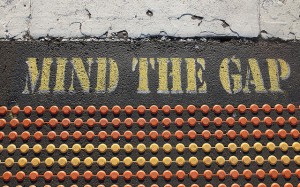After a 9-month break – the gestation period for my latest book (Focus on Learning Technologies, Oxford University Press, forthcoming 2016) – I’m blogging again. And in deference to our ever shortening attention spans, my ‘1-minute guide’ series is back. Here’s a 1-minute guide to the digital divide (mainly for English language teachers).
1. To have or not to have
You’ve probably heard the ‘term’ digital divide. The term is often used to talk about the divide between those who live in ‘developed’ countries (and therefore, the argument goes, have access to technology), and people who live in ‘developing’ countries (and therefore, don’t have access to technology). But stop and think for a minute, and you’ll realise that this isn’t always the case. Even If you live in a resource rich country (let’s say Switzerland or Australia), where in theory technology is affordable and available, not everybody always has access to new technologies. And equally, if you live in what might be called a ‘low-resource’ environment, it isn’t always the case that nobody has access to any technology. Even in contexts where technology may traditionally have been beyond the means of the majority, the rapid spread and affordability of low end mobile devices and connectivity means that large numbers of previously disadvantaged sectors of the population now own or have access to mobile technology at the very least.
2. Other digital divides
A digital divide can exist on a number of levels. For example, within a high resource context, we may have disadvantaged groups (such as migrants, or the homeless). We may also have a considerable divide between urban and rural areas, in terms of access to technology and infrastructure. In a single city we may have schools which are very high-tech, and schools with little or no technology. And even at the level of the individual classroom, we may have students who have access to technology at home to help them with their homework, and students who do not.
3. A teacher digital divide
Another digital divide is that between teachers who have the skills and training to appropriately leverage technology to enhance and support their students learning, and those who don’t. In other words, there is a divide between teachers who use technology well, and teachers who use it ineffectively or not at all even if they have access. If we look at the digital divide from this perspective, we can see it as a pedagogical issue – and therefore one that teachers can be equipped to overcome. In fact, training teachers – and learners – to become digitally literate is not only achievable, but should be a fundamental consideration in any training programme, both pre-service and in-service.
4. Technology in low-resource ELT contexts
In my training around the world, I come across teachers who work in contexts with little – or no – technology in their schools. Some of these teachers throw up their hands and claim that nothing can be done. However, some of these teachers have worked within their (limited) contexts to integrate an appropriate and context specific use of technology into their English language classes. There are many examples of teachers doing just this.
Your 1 minute is up, but if you’d like to take a further minute, here are some examples of technologies being used in a variety of low-resource contexts, at national, institutional and individual level. This is from a conference presentation I gave for the first time a year or two back. I think it provides some interesting case studies.
Nicky Hockly
The Consultants-E
January 2016
Past 1-minute guides:
The 1-minute guide to good conference presentations
The 1-minute guide to MOOCs
The 1-minute guide to integrating technology into teaching
The 1-minute guide to the mobile classroom
The 1-minute guide to teachers’ concerns about mLearning
The 1-minute mLearning Panel summary

